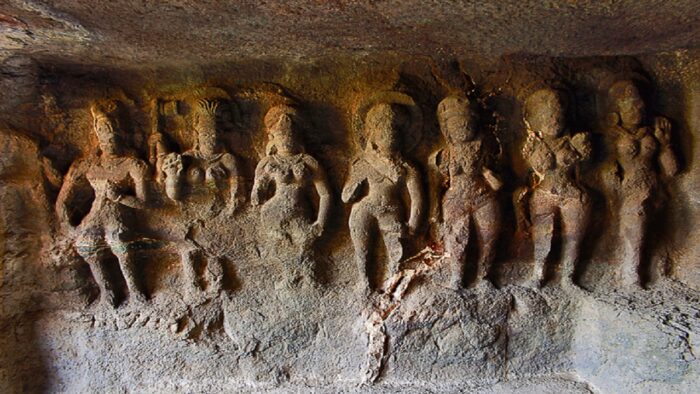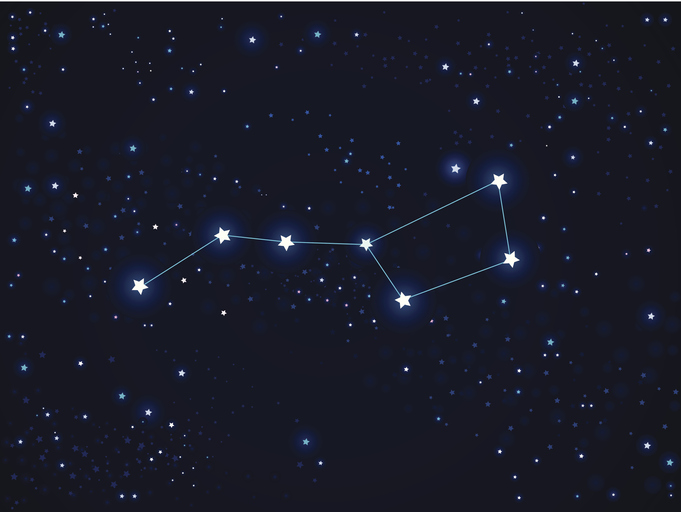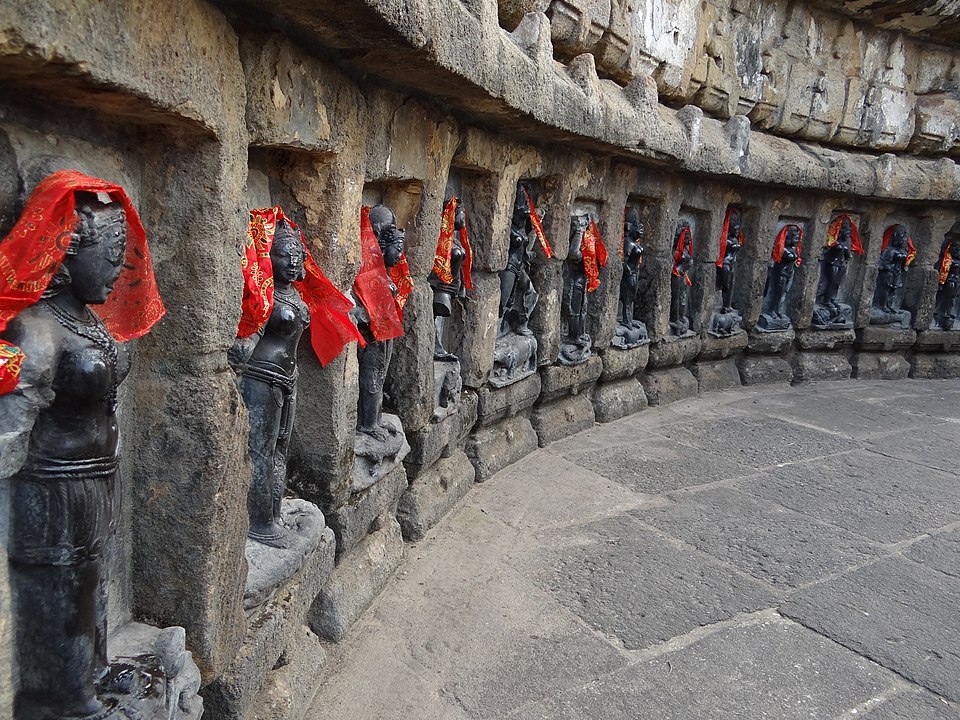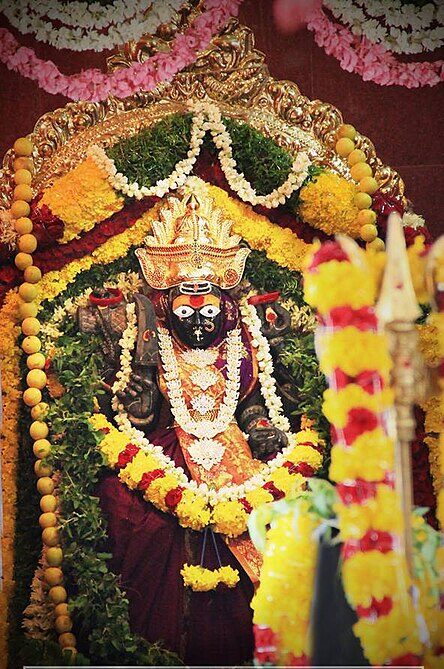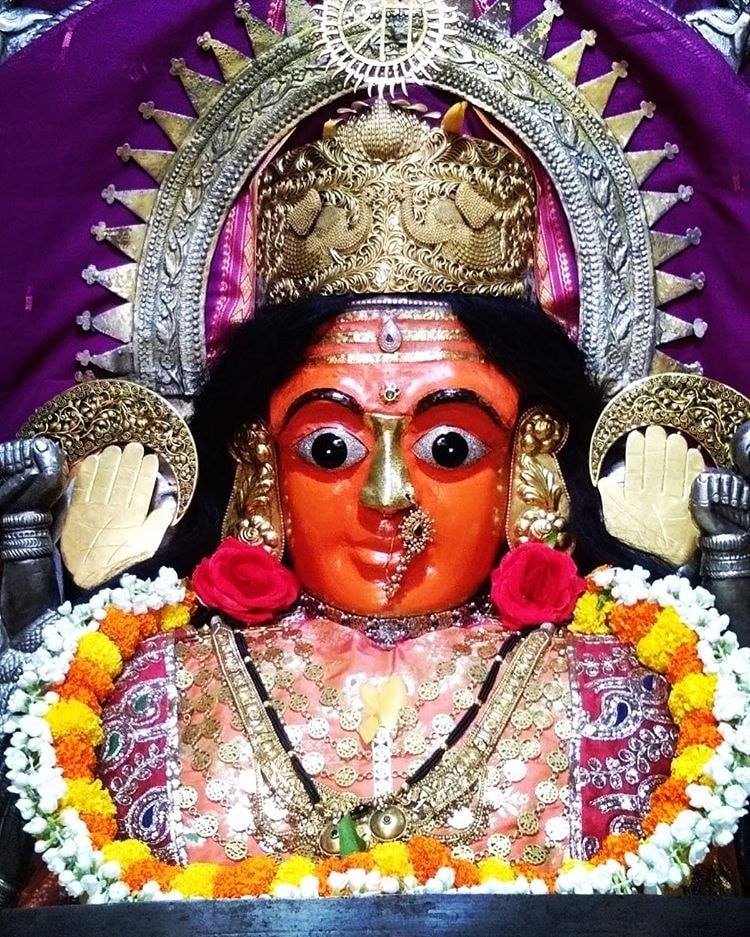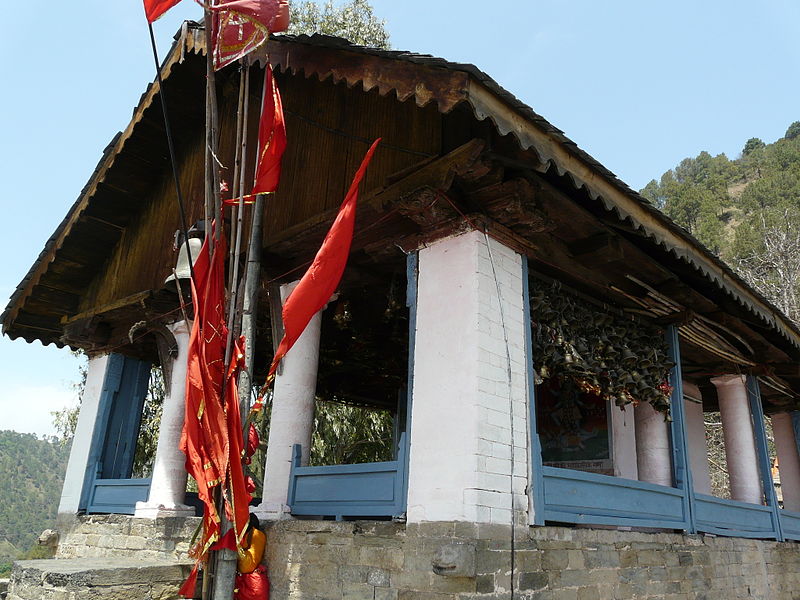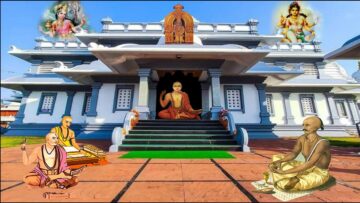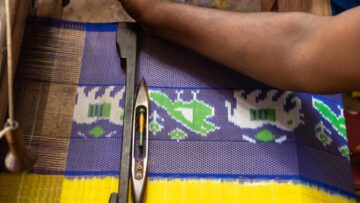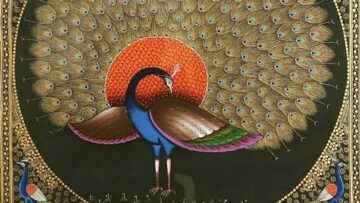Abstract
This paper focuses on the study of the legend of the seven sister goddesses found in different parts of India. It brings out the local variations in the stories, their connection with the Saptamatrikas and their importance in the religious and cultural ethos of the local communities.
Introduction
India has had a long tradition of worship of the seven mother goddesses or the Saptamatrikas. They are commonly known as Brahmani, Vaishnavi, Maheshwari, Kaumari, Varahi, Indrani and Chamunda.
Origin of Saptamatrika Worship
According to Jagdish Narain Tiwari and Dilip Chakravati, the worship of Saptamatrikas was in existence during the Sindhu-Saraswati valley civilisation. A seal has been found during excavations that have a row of seven feminine deities which is cited as evidence for the theory. (Jagdish Narain Tiwari, ‘Studies in Goddess Cults in Northern India’).
The Rigveda mentions a group of seven celestial women who control the preparation of soma. The vana-parva of Mahabharata mentions the Saptamatrikas as a group of seven Goddesses who are adopted by Kartikeya as his mothers.
David Kinsley, in his book, ‘Hindu Goddesses: Vision of the Divine Feminine in the Hindu Religious Traditions’ cites this story as follows; (p 152). The Kritikas were seven sisters married to seven brothers. The seven brothers were the SaptaRishis, stars that form the Big Dipper constellation. The seven sages and their wives lived together, until one day the SaptaRishis accused six of the sisters of infidelity—by saying they preferred the love of Agni. Angered by this, six of the Krittikas left their homes. Only one of the seven sisters remained with the seven stars. This star is Alkor or Arundhati said to be married to Rishi Vasishtha.
(Figure 1: Credit: IStock – Big dipper constellation)
The banished Krittikas came to Lord Kartikeya, son born of the fire of Lord Shiva and appealed to him to adopt them as his mothers. He agreed and asked them for their wishes. They made two requests. The first is to be worshiped as great goddesses throughout the world. The second request is to live off the children of men. Kartikeya was reluctant to grant the second boon and asked them to protect children if they are propitiated. These six Krittikas with Goddess Parvati, Kartikeya’s real mother make up the Saptamatrikas.
David Kinsley proposes that the Matrikas may have been local village goddesses, who were being assimilated in the mainstream. He cites two reasons for his assertion; their description in Mahabharata as being dark in colour, speaking foreign languages and living in “peripheral areas” and their association with god Skanda and his father, Shiva.
Madhu Wangoo Bazaz has stated that the legend of Saptamatrikas originated from the seven stars of the star cluster the Pleiades. Harper and Brown, in their book ‘The Roots of Tantra’ also support this theory and mention that the Saptamatrikas are associated with Vedic Krittikas or the constellation of Pleiades. Because Kartikeya was raised by the Krittikas, he gets his name Kartikeya.
Munya Andrews, writer of the book, ‘The Seven Sisters of the Pleiades: Stories from around the World’, corroborates this connection between the Saptamatrikas and Kartikeya and points out the connection between Deepavali, the festival of lights coming in the month of Karthik and the Krittikas. According to Andrews, the lamps lit on Deepavali night are ‘symbolising stars glowing in the night sky’, i.e., the Krittikas.
Indologist Dr Prithvi Kumar Agrawala points out that the Krittikas ‘are regarded in the TaittiriyaBrahmana as the ‘mouth’ or chief of the lunar mansions’ and as ‘the head of Prajapati’. The seven stars are named in TaittiriyaBrahmana as Amba, Dula, Nitatani, Abhrayanti, Meghayanti, Varshayanti and Chupunika. They also had a brother named Rushabh who is identified with Agni.
Shaman Hatley writes in his paper that ‘In addition to their temple cult, the Seven Mothers also became important goddesses within Tantric or “esoteric” Śaivism in early medieval India, and had historically significant roles within Tantric Buddhism as well.’
References in the Puranas
In the MatsyaPurana, it is mentioned that Lord Shiva created seven goddesses to combat Andhakasura, who had the ability to duplicate from each drop of his blood that falls on the ground. The Saptamatrikas drank up the blood that spouted from Andhaka and helped Lord Shiva defeat the demon. There is a beautiful sculptural panel depicting this at the Kailas temple in Ellora.
In the DeviMahatmya, it is said that goddess Durga created seven terrible Goddesses from herself and with their help slaughtered the demon army of Mahishasura. In this version of the story, the Saptamatrikas sucked all the blood of the demon Raktabija.
References in non-religious literature
Saptamatrikas are widely mentioned in Sanskrit literature. In Mahabharata, all the seven mothers are described as living in trees, crossroads, caves and funeral grounds and they are terrible as well as beautiful.
David Kinsley mentions that the Natyashastra recommends that the Saptamatrikas be worshiped prior to setting up the stage for dance and drama performances. Both Bhasa and Sudraka refer to offerings made to the Saptamatrikas at crossroads in their plays.
The 12th century Kashmiri poet, Kalhana mentions the worship of Saptamatrikas along with Shiva as being widely prevalent in Kashmir at the time.
Iconography
The earliest rock-cut panel dedicated to the Saptamatrikas dates back to the Kushana period (1st century CE). However, the worship of Saptamatrikas became quite popular by the seventh century and Saptamatrika panels became a standard feature of Hindu temples from the 8th century onwards.
The Saptamatrkas are generally carved in relief on a rectangular stone slab in the sequential order of Brahmani, Maheshvari, Kumari, Vaishnavi, Varahi, Indrani and Chamunda, usually being flanked by two male figures – Veerbhadra or Bhairav and Ganesh on either side.
The development of Saptamatrika sculptures as cited by Goswami, Gupta and Jha in their research paper, ‘Sapta Matrikas In Indian Art And Their Significance In Indian Sculpture And Ethos: A Critical Study‘ can be traced as follows; ‘from Gupta period (3rd to 6th century A.D.), Gurjara Pratiharas ( 8th to 10th century A. D. ), Chandellas ( 9th to 12th century A.D. ), Chalukyas (11th to 13th century A.D. ), Pallavas and Cholas (7th to 9th century A.D.)’
In the Rameshvara cave at Ellora dating back to 6th century CE, there is a beautiful Saptamatrika panel where the seven goddesses are depicted as benign, sensuous, beautiful maternal figures, each with a toddler. In this depiction, the ferocious aspect is totally subdued, and the Saptamatrikas come across as beautiful maternal figures. The terrible aspect is depicted by an emaciated and fierce Chamunda and an all devouring Kaal or Time carved next to them. The seven goddesses themselves are elegant, beautiful, self-absorbed and benign.
Regional Legends of Seven Sister Goddesses
Different regions of India have their own version of the seven sister goddesses. They are referred to collectively as SatAsara, Satvaheni or Satbahini. They are associated with conception, birth, diseases and protection of children.
Many states in India have their own legend of the seven sister goddesses. They have different names, and different stories associated with their birth and emergence. But they all have one thing in common; they are the protector deities of expectant mothers and children and must be worshipped for the protection of children. During my travels across India, I have come across many such regional variations of the seven sister goddesses.
They have different local names in each region and different stories regarding their origin. But there are many aspects in common, these sister goddesses are always seven in number, they are both beautiful and terrible, they are often enshrined under trees, on mountains, near crossroads or near a running stream and they are to be propitiated first before any major festival to ensure the protection of children.
This fits the textual description of Saptamatrikas as given in the Mahabharata, where they are described as fierce goddesses living in trees, crossroads, caves and funeral grounds, speaking foreign tongues and are both terrible as well as beautiful. The seven sister goddesses function both as city protectors and individual protectors of the community where they are worshipped.
While the Saptamatrikas are always worshipped together as a composite group, the regional versions of the seven sister goddesses are worshipped both collectively as well as individually. They have their own temples that may be separated by a few miles and they are worshipped for specific things. They are also usually accompanied by a ‘brother’ deity.
Odisha
In Odisha, the seven sister goddesses are collectively referred to as the Satvaheni (“seven sisters”). The seven sister goddesses are believed to be the followers of the famous Tantric princess Lakshminkara. They are believed to be of low birth, but achieved great tantrik prowess. They are still in worship in Puri today.
Their names are Nitei Dhobani, Jnanadei Maluni, Gangi Gauduni, Sua Teluni, Luhukuti Luhurani, Sukuti Chamaruni, and Patrapindhi Saharuni. As their last names suggest, they were all working women with distinct professions, Niten was a laundress, Jnanadei was a garland maker, Sua was an oil extractor, Gangi was a jaggery maker, Luhukuti was an iron smith, Sukuti was a shoe-maker, and so on. They all have their own separate stories.
(Figure 2: Credit: Wikipedia – Inside the Chausath Yogini Temple, Hirapur)
There is also a separate temple dedicated to the Saptamatrikas in Jajpur, where the Matrikas are iconographically represented in their terrible aspect with Murtis carved from black stone. They are worshipped by expectant women and mothers of small children. The Saptamatrikas are also included among the Yoginis, a group of sixty-four or eighty-one Tantric goddesses in Odisha. There are two temples in Odisha dedicated to the 64 Yoginis, one in Hirapur and the other in Ranipur.
Goa
In Goa, the seven sisters are known as Kelbai, Mahamaya, Lairai, Mirabai (or Milagres), Morjai, Sheetalai, Adadeepa — and their brother Khetoba, who is a version of Kshetrapal, a form of Veerbhadra. Folk culture researcher from Goa, Vinayak Khedekar interprets it as the worship of Pleiades cluster worshipped as Saptamatrikas. ‘In Goa, they are worshipped in a special festival called Katyo,’ Khedekar says.
As the story goes, the seven sisters and their brother Khetoba, travelled on an elephant from the Western Ghats to Bicholim in Goa looking for a home. As Goddess Shantadurga was already the presiding deity at Bicholim, she sent them to the nearby Mayem village, where they set up home.
One day Khetoba was told to arrange the fire for cooking food. When he did not return, Lairai, worried, went looking for him, and found him playing with friends. Livid, kicked her brother, and he, twisted his back. When Kelbai learnt what transpired, she admonished Lairai, who left home and settled at Shirgao.
But she vowed return every year to walk barefoot on fire as penance, something her devotees do in a festival in May at her temple. Lairai’s favourite sister is Mirabai whose temple in Mapusa was forcibly converted into a church where she is worshipped as Milagres Saibin, or a version of Mother Mary, after the Portuguese arrived. To this date, Mirabai is worshipped by both Hindus and Christians.
Lairai has no image, and is represented by a pot full of the temple pond’s water with bud of a mogra inside it, signifying a foetus inside the womb. Morjai settled in Morjim. Mahamaya settled in Mayem, while Kelbai settled in Mulgaon. People believe that Adadeepa left for an island called Anjadvip and Sitlai disappeared into the nether region via the sea.
What is interesting is that in Goa, despite a Hindu deity being transformed into a form of Mother Mary, she hasn’t lost her original identity and position as one of the seven sisters, and has not ceded her space in the pre-Portuguese rituals that celebrate the seven sisters’ story.
Andhra Pradesh and Tamil Nadu
The seven sister goddesses are worshipped as Poleramma, Ankamma, Muthyalamma, Dilli Polasi, Bangaramma, Mathamma, and Renuka in Tamil Nadu. In Telangana- Andhra Pradesh the seven sisters are known as Peddmma Isoddmma, Mariamma, Ankalamma, Ellamma, Nakullamma, and Arikkamma. Their shrines are usually located outside the village boundary. They are often worshipped as simple stones kept under a tree, with no clear features.
(Figure 3: Credit: Wikipedia – Poleramma Devi at the Beeramgunta temple, Nellore)
Poleramma is considered as the goddess of smallpox in the Telugu speaking regions. She is also considered responsible for the health of the people and animals in the community and must be propitiated to ensure good health.
Ankamma is worshipped as a household goddess as well where she is represented by a pot in which there are some shells, little earthen mugs, and other similar articles. The shells represent the teeth of devils and the pots represent the food which they yearn for. She is supposed to protect the household from evil forces.
Dilli Polasi is both, a household deity and a village deity. As a household goddess she is represented by several pots placed one on top of another. During household worship the woman of the house sends new clothes to her daughter and son-in-law to protect them from ill health.
Renuka is a manifestation of Mother Earth, and is sometimes worshipped in the form of a live anthill. Renuka is worshipped, both as a part of the seven sisters pantheon as well as a standalone goddess. She is worshipped widely in peninsular India and is known by different names, Mahankali, Jogamma, Somalamma and Renukamba.
Gujarat
In Gujarat, the seven sister goddesses are known as Khodiyar and her sisters Aaval, Jogal, Togal, Holbai, Beejbai and Sosai. They are supposed to be the children of a pious minister named Gadhvi. The queen banished him because he is childless. He prays to Lord Shiva. Lord Shiva tells him that he is destined to be childless. Gadhvi jumps into the ocean to end his life, but Lord Shiva saves him and takes him to Naag loka. There the daughters of the Naga king feel sorry for him and they tell him to go home and set up 8 cradles in his house. At night, seven female Snakes and one male snake enter the home and transform into infants. The king raises them as his own children. They are worshipped to ensure the good health of people and are depicted as a group of seven figures standing under a snake’s hood to signify their Naga origin.
Punjab and Haryana
In Punjab and Haryana, the seven sister goddesses are known as Phul Mata, Sitala Mata, Badi Mata, Pansahi Mata, Gusulia Mata, Kankar Mata and Malbal. They are worshipped, both as a composite group as well as individually. They are often represented by simple balls of clay. Phul Mata specifically is worshipped when a child has typhoid fever. In such a situation, parents place an earthen pot filled with cool water and flowers next to the child and burn incense. The water is to cool the fury of Phul Mata.
Maharashtra
In Maharashtra’s Konkan region, the seven sisters are worshipped as Champavati, Shitala, Ekvira, Padmavati, Kalalagi, Hingulaja, and Chatursiti. Champavati is considered to be the eldest sister and is said to be the chief village deity of Chaul village.
Hingulja is considered to the most powerful among all sisters. Villagers celebrate a special jatra in the name of Hingulaja. All the goddesses have their own temples in separate villages, but are also worshipped together as sisters.
In other parts of Maharashtra, the seven sister goddesses are simply worshipped as Sat Asara and they are considered to be guardians of water sources like streams and rivers. They are represented as seven sindoor clad stones set under a tree near a stream or a river.
(Figure 4: Credit: Facebook – Mumbadevi)
The Kolis or the fishermen community of Mumbai worships the seven goddesses as Mumbadevi, Chandika Devi, Mahalakshmi, Sitlamata, Kalbadevi, Jari Mari, Cheda Devi and their brother, Mhasoba. All of them have their own temples in different parts of today’s Mumbai where the Kolis have the first right of worship on specific days.
Himachal Pradesh
In the Chamba district of Himachal Pradesh, the seven sister goddesses are known as Lakshana Devi of Bharmour, Shakti Devi of Chatradi, Chamunda Devi of Chamba, Ambika Devi of Kangra, Jalpa Devi, Bhadal Devi of Paror and Ava Devi of Vaira.
(Figure 5: Credit: Wikimedia – Chamunda Devi Mandir, Chamba)
As per Himachal Pradesh folk lore researcher S L Harnot, Legend has it that these seven sisters were born to a childless couple from Chamba as a result of blessings from Devi Hirma of Chamba. But when they were young, their parents had gone out for a work, and an evil demoness lured them out to the river bank and ate them. When the parents returned, they were mad with grief. When they searched the Ravi river bank, they found the bones of the girls. The mother refused to believe that her daughters were dead, and would keep a pot full of milk at the river bank every night. The milk would get finished by morning. So all the villagers went and prayed to Hirma Devi. She told them that the seven girls were indeed eaten by a demoness, but as they were born with Hirma’s blessings, they would not die and emerge as Devis in their own right.
With the blessings of Hirma Devi, the seven sisters emerged from the river banks, radiant as the morning sun and dispersed to different villages to preside there.
Rajasthan
In Rajasthan, the seven sister goddesses are collectively worshipped as Satobahin (literally, seven sisters). They are sometimes accompanied by their brother who is known as Bhairu, a corruption of Bhairav, another name for Veerbhadra.
The Seven Sisters are remembered and propitiated in certain ritual contexts. During marriages, brides-to-be are given a silver amulet depicting the seven goddesses and their brother to protect them from harm.
As per Helen Lambert, this is the only form in which Satobahin are iconographicaIly represented. (The Homeless Goddess, Cosmology, Sickness and Women’s Identity in Rajasthan).
In the month of Shravan, mothers paint seven dots on their child’s hands with henna to represent the Satobahin. During festivals, women draw seven dots near the entrance of the home to propitiate the Satobahin so that nothing bad or inauspicious could come inside the home.
Satobahin are imagined to be a band of goddesses who ‘roam’ (ghumbii) or ‘play’ (khelba) on a circuit (pherii, chakkar) at dawn, dusk and midday. They frequent certain specific places in the household like the parinda where drinking water is stored, the uthyana, where pots are cleaned, the door lintels and the main threshold of the home. They also frequently gather under a banyan tree. This movement of the Satobahin along this circuitis sometimes referred to as ‘Mataji’s arrow’.
Conclusion
As we can see from the above people, while the legend of the seven sister goddesses originated from the worship of the Saptamatrikas, the different local versions of the seven sister goddesses have their own distinct lore and functionality. Iconographically too, they are represented quite differently from region to region. They are usually accompanied by a single ‘brother’ deity and they are worshipped for protection. The seven sisters are independent, fierce, usually unmarried, but sometimes shown with a baby. Kinsley speculates that Saptamatrikas as described in the Mahabharata represent the many village goddesses who were not a part of the vedic pantheon. To me, however, they straddle the space between classical Hindu concept of Goddess worship and the folk version of Goddess worship. The seven sister goddesses are depicted as dangerous and are associated with specific geographical boundaries, but they are maternal and benign to the devotees if propitiated.
References
Kinsley, David – Hindu Goddesses: Visions of the Divine Feminine in theHindu Religious Tradition, Berkeley: University of California Press.
Andrews, Munya, – The Seven Sisters of the Pleiades: Stories from around the World, Spinex Publications
Hatley, Shaman, – From Mātṛ to Yoginī, Continuity and Transformation in the South Asian
Cults of the Mother Goddesses.
Lambert, Helen, – The Homeless Goddess, Cosmology, Sickness and Women’s Identity in Rajasthan, https://www.anthro.ox.ac.uk/sites/default/files/anthro/documents/media/jaso25_1_1994_21_30.pdf
Aldrovandi, Cibele, – Goddess Santeri and the female deities in Goa: reassessing the pre- Portuguese sacred landscape through the earliest Forais, Indian Journal of Archaeology, Vol. 5, No 2, (2020), 1333-1361
Bhattacharyya, N. N. (1974). History of the Sakta Religion. Munshiram Manoharlal Publishers.
Dehejia, Vidya, – Yogini Cult And Temples, A Tantrik Tradition, National Museum, Janpath, New Delhi.
Wangu, Madhu, – Images Of Indian Goddesses, Abhinav Publications.
Harper, Katherine Anne; Brown, Robert L. (2002). The Roots of Tantra.
हरनौत, एसआर, – हिमाचलकेमंदिरऔरउनसेजुडीलोककथायें, Minerva Book House
https://talkingmyths.com/seven-sisters-and-a-brother/
Feature Image Credit: istockphoto.com
Conference on Tantra & Tantric Traditions
Watch video presentation of the above paper here:
Disclaimer: The opinions expressed in this article belong to the author. Indic Today is neither responsible nor liable for the accuracy, completeness, suitability, or validity of any information in the article.

